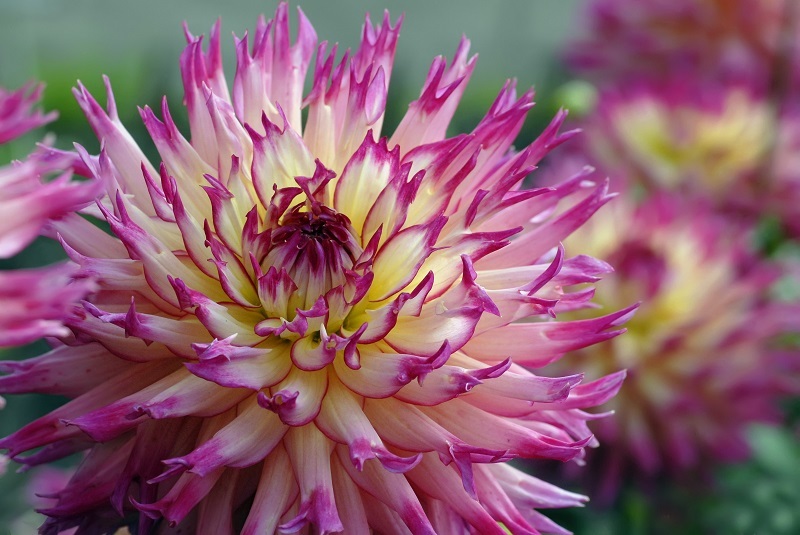Expert Advice for Caring for Orchids Year-Round
Posted on 30/08/2025
Expert Advice for Caring for Orchids Year-Round
Orchids have captivated plant lovers for centuries with their exquisite blooms and unique charm. While they're often seen as challenging to maintain, the reality is that with the right approach, caring for orchids throughout the year can be a rewarding experience. Whether you're a beginner or seasoned enthusiast, this comprehensive guide offers expert advice on year-round orchid care, including proper watering, lighting, temperature management, pests, and more, ensuring your orchids remain healthy and beautiful every season.
Understanding Orchid Basics: Why Year-Round Care Matters
Orchids belong to one of the largest and most diverse plant families, the Orchidaceae. There are thousands of orchid species, each with its own unique requirements. Despite their tropical origins, many orchids thrive indoors if provided with the right conditions. Implementing ongoing orchid care ensures:
- Continuous growth: Healthy, lush foliage and strong root systems.
- Regular blooming: Orchids may flower several times a year if well cared for.
- Resilience to stress: Protection against pests and diseases.
Let's break down the essentials of orchid maintenance across different seasons to keep your plants thriving year-round.

Key Orchid Species for Home Growers
Before tailoring your care routine, it's crucial to identify your orchid variety. Some of the most popular orchids for indoor growing include:
- Phalaenopsis (Moth Orchid): Renowned for its ease of care and long-lasting blooms.
- Cattleya: Known as the "Queen of Orchids," Cattleyas offer vibrant petals and a pleasant scent.
- Dendrobium: This diverse group produces striking flowers and thrives in various conditions.
- Oncidium: Also called "Dancing Lady" orchids, they present sprays of cheerful yellow or red blossoms.
Knowing your orchid's specific needs is key to mastering orchid maintenance throughout the year.
Year-Round Orchid Care: Seasonal Strategies and Tips
Orchids react to the changes in their environment, and understanding how each season affects their needs is crucial. Below is a breakdown of orchid care throughout the year with expert-approved techniques:
Spring Orchid Care: Awakening and New Growth
Spring is a period of renewal for orchids. During this time:
- Light: Increase light exposure as days lengthen, but avoid direct sunlight, which might scorch leaves.
- Watering: Resume or increase watering frequency as your orchid starts to grow faster; check moisture by touching the potting media.
- Fertilizing: Begin a regular feeding schedule with a balanced orchid fertilizer - usually every two weeks.
- Repotting: Spring is the ideal time to repot before blooming, especially if roots are circling the pot or the medium has degraded.
- Pruning: Remove spent flower spikes and dead roots.
Expert Tip: Use a transparent pot to monitor root health and moisture more easily.
Summer Orchid Care: Managing Heat and Growth
Orchids often experience the fastest growth in summer, benefiting from longer, brighter days. However, this season also poses risks of overheating:
- Light: Provide bright, indirect sunlight. Consider sheer curtains to filter harsh rays.
- Watering: You may need to water more often due to evaporative loss, especially in warm climates. Always allow the medium to dry slightly between waterings.
- Humidity: Increase surrounding humidity (ideally 50-70%) with trays of water, humidifiers, or regular misting. Group orchids together to raise local humidity.
- Ventilation: Ensure good air flow to prevent fungal and bacterial diseases.
- Fertilizing: Continue regular fertilizing every 1-2 weeks, but avoid overfeeding.
Expert Tip: Move orchids away from hot windowsills or any source of radiant heat during extreme summer temperatures.
Fall Orchid Care: Preparing for Bloom
Many orchids initiate blooming in the fall as temperatures begin to drop:
- Temperature: Some orchids, like Phalaenopsis, require a difference between daytime and nighttime temperatures to trigger blooming.
- Watering: Gradually reduce watering frequency as growth slows. Continue to check the medium for dryness.
- Feeding: Switch to a bloom-boosting fertilizer higher in phosphorus.
- Repotting: Avoid repotting if your orchid is setting buds or flowering.
- Cleaning: Wipe leaves with a damp cloth to remove dust and improve photosynthesis.
Regularly inspect for buds and enjoy the anticipation of winter blossoms!
Winter Orchid Care: Supporting Blooms & Rest
Winter is when many orchids delight growers with colorful flowers. Support your plants by:
- Light: Compensate for shorter days using full-spectrum grow lights if needed. Orchids need 12-14 hours of light for sustained bloom.
- Temperature: Avoid drafts or sudden temperature changes. Most orchids prefer day temps of 68-75?F (20-24?C) and nights no lower than 60?F (16?C).
- Humidity: Indoor heating dries out the air; increase humidity with trays and groupings.
- Watering: Water less frequently, but don't let the roots desiccate. Use lukewarm, distilled, or rain water.
- Feeding: Fertilize sparingly, only once a month if your orchid is dormant.
Pro Tip: *Rotate flowering orchids regularly so all sides receive equal light, leading to uniform growth and bloom distribution.*
Essential Elements of Orchid Care: The Fundamentals
1. Watering Techniques for Healthy Orchids
Correct watering is paramount to orchid health. Overwatering is a leading cause of root rot, while underwatering can desiccate sensitive tissues. Follow these expert guidelines:
- Check before watering: Stick a finger or wooden skewer into the pot. Only water if the medium feels dry.
- Water early in the day: So plants dry before evening, reducing bacterial and fungal issues.
- Use appropriate water: Soft, tepid water, such as rainwater or filtered water, is best. Avoid softened tap water, which can harm orchids.
- Thorough soak: Drench the medium and roots, then allow excess water to drain completely. Never let the pot sit in water.
2. Balancing Light for Maximum Growth
Orchids need bright but indirect light to thrive. Too much sunlight scorches leaves, while too little causes weak, spindly growth:
- Phalaenopsis: Medium-bright, indirect light; east-facing windows are ideal.
- Cattleyas/Oncidiums: Bright, filtered sun; acclimate slowly to avoid burn.
- Dendrobiums: Tolerates more direct sun, but protect during hottest hours.
Clue for insufficient light: Yellowing leaves and lack of blooms may indicate your orchid needs more brightness.
3. Fertilizing Orchids the Smart Way
Use a balanced, water-soluble orchid fertilizer (such as 20-20-20) or a formula tailored to blooming phases. Expert orchids care advice includes:
- "Weakly, weekly": Apply dilute fertilizer every week during active growth.
- Flush monthly: Remove accumulated salts by watering thoroughly with plain water once a month.
- No fertilizer on dry roots: Water lightly before fertilizing to avoid root burn.
4. Choosing the Right Orchid Potting Mix
Most orchids require a well-aerated, moisture-retentive yet free-draining media. Expert growers recommend:
- Bark mixes: Ideal for most epiphytic orchids like Phalaenopsis and Cattleya.
- Sphagnum moss: Superior moisture retention; suitable for younger orchids or drier climates.
- Perlite or charcoal: Added to improve aeration and prevent decomposition.
Replace media every 1-2 years or whenever it degrades. This prevents root suffocation and disease.
Common Orchid Problems & Solutions: Troubleshooting Year-Round
Even with optimal care, orchids might face challenges. Here's how to address common orchid issues:
Pest Control
- Spider mites, scale, and mealybugs: These pests thrive in dry conditions. Combat them with neem oil or insecticidal soap, and wipe leaves regularly.
- Fungus gnats: Reduce excess moisture; let the top of the medium dry out between waterings.
Disease Management
- Root rot: Cut off affected roots, repot with fresh medium, and reduce watering frequency.
- Leaf spots/fungal infections: Remove affected leaves and improve air flow. Use a fungicide if necessary.
Non-Blooming Orchids
- No flowers? Check light and temperature. Many orchids need a 10-15 degree drop in night temperature to initiate blooms.
- Overfeeding: Cut back on fertilizer during the blooming phase to avoid excessive foliage at the expense of flowers.

Bonus Tips from Orchid Experts for Year-Round Success
- Stay consistent: Sudden changes in care often result in orchid stress and poor flowering.
- Monitor regularly: Check leaves, roots, and flowers each week for signs of pests or disease.
- Keep a journal: Document watering, feeding, repotting, and bloom times for each orchid.
- Join a community: Connect with local orchid societies or online forums to exchange advice and troubleshoot issues.
*Expert orchid care is both a science and an art. Pay attention to patterns and subtle changes; your orchids will "communicate" their needs through visual cues.*
Conclusion: Enjoy Your Orchids All Year Long
With these expert orchid care tips for every season, you're well-equipped to nurture thriving, blooming plants no matter the time of year. Remember, caring for orchids is a journey--embrace the process, observe your plants closely, and adjust as needed. In return, your orchids will reward you with vibrant colors and exquisite beauty, transforming your home into a living garden year-round.
Happy orchid growing! For more advice on orchid care and troubleshooting tips, keep exploring our site and connect with fellow enthusiasts--you'll soon become an orchid expert yourself.
Latest Posts
Easy Flower Preservation: Three Methods Anyone Can Try
Curious About Tulips Here Are 7 Facts That Might Surprise You
Unveiling the Emotional Benefits of Surrounding Yourself with Flowers
The Language of Birth Flowers and What Yours Tells the World About You






